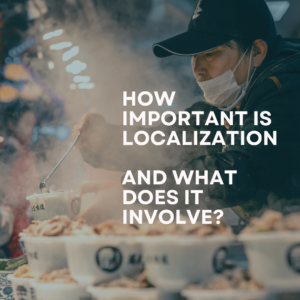Multilingual Content Marketing In 2019
Multilingual Content Marketing: Its 2019 and we’re living in an all-inclusive society, where movies, advertisements and other forms of media now feature individuals from different ethnicities, cultures, races etc. In the past, mainstream media wasn’t as inclusive as it is today.
Similarly, Google has evolved with the times and doesn’t only cater to the 1500 million English speakers out of a solid 7.4 billion world population (that only covers 20.27% of the audience!). Languages like Mandarin, Spanish, Hindi-Urdu, Arabic, Portuguese and other languages are now being included into a brand’s content marketing strategy.
Going multilingual with your content strategy ensures a strong overseas base. Translation is one of the most basic steps towards a successful content strategy. What is more important is transcreation. Thus, you’ll need to find out what works for your audience and how through this blog.
How Inclusive Are You As Brand Today?

1. Know Your Audience
If your brand has an audience base that is present in non-English speaking countries, your first step will be research that is carried out locally in those countries through agencies, translators etc. You need to have a thorough understanding of their internet usage, content consumption behaviour, app usage etc. before diving into your strategy
2. Focus On Your Core Messaging
One of the biggest challenges in communication to a diverse audience is translating your message without changing your objective and meaning. Different cultures have different tonal and contextual meanings. The last thing you’ll want to see is your messaging getting retaliation or just merely getting lost in translation.
For Example: Mercedes-Benz entered the Chinese market, under the brand ‘Bensi,’ which translated into ‘Rush to die.’
Do Not Make Such A Mistake!
3. Focus On Crafting Personalized Content
It may seem challenging at first, but once you’ve had a thorough understanding of your audience, the way they consume content and search behaviour, its time to focus on content that touches their hearts. One of the best ways to understand what works well with your audience is analysing successful campaigns from the past in the country.
4. Optimize Your Keywords
SEO and SEM are fundamental to your Multilingual content marketing strategy. Search terms, however, change from language to language and from culture to culture. Google trends will give you an idea of trends in different countries so that you can craft your blogs accordingly. Content Management Systems like WordPress provides you with statistics about your most popular pages, posts and where your traffic comes from.
5. Devise A Solid Social Media Strategy
Every social media platform works according to different algorithms. LinkedIn prefers professional content; Facebook pushes casual and factual content while Instagram promotes visual content. But what you as a brand need to uncover is the use of local social media platforms in the countries you plan to target. Western social media platforms are banned in China, while Japan uses Line and Yahoo to consume content. Your social media strategy has to be all-inclusive as well!
Conclusion
We hope you’ve understood that it isn’t only the local translators that will do the deed for you. You need to have an entire marketing team dedicated to this section because you’ll need a broader understanding in terms of dividing a campaign. A localised agency could help you achieve your multilingual content marketing goals as well.
As A Multilingual Agency, We’d Love To Help You Reach Out To Your Localised Audience






















